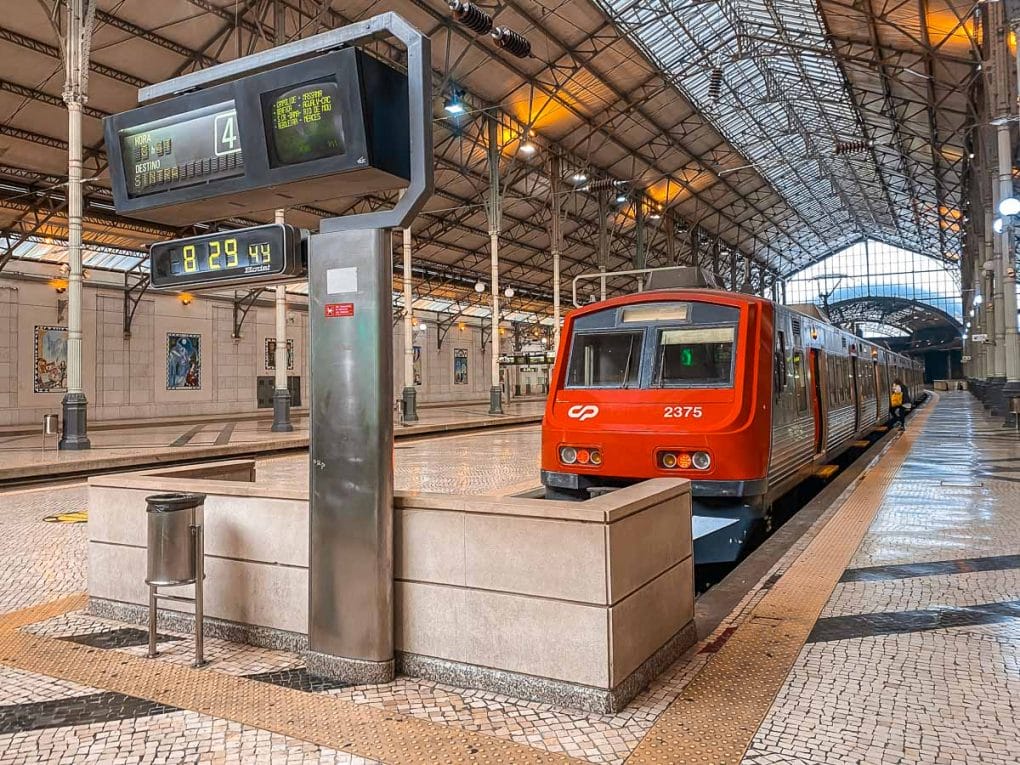If it’s your traveling to Europe for the first time, this ultimate guide shares everything you need to know to have a smooth and enjoyable trip.
I’ve had the privilege of living in two countries in Europe (Denmark and Germany) for a total of over 4.5 years. Throughout that time, I’ve been able to explore 24 countries both with travel companions and as a solo traveler and have learned so much about how things operate around the EU (through both research and mishaps).
And although European ways no longer really surprise me, I thought I’d share everything I’ve learned along the way that may help my fellow travelers.
So if it’s your first time visiting Europe, here are some essential and totally random (but practical) things to keep in mind.
*Disclaimer: Europe is a big place, and these are very general travel tips for Europe. Which means you should always research the specific rules, customs, laws, etc. for each country and even city that you visit. K, thanks, bye.
Read More: Hostel Etiquette: 15 Unspoken Hostel Rules Everyone Should Know
This post may contain affiliate links, meaning at no additional cost to you, if you click my links and make a purchase, I may earn a small commission. Learn more on my disclosure page. Thank you for your support!
Table of Contents: Traveling to Europe for the First Time
General Travel Tips for Europe
How to Plan a Perfect European Itinerary
What to Pack for Europe
Accommodation and Hotels in Europe
Restaurants in Europe
Cultural Tips for Europe
Money and shopping in Europe
Driving in Europe Tips
Public Transportation Tips in Europe

General Travel Tips When Traveling to Europe for the First Time
No matter where you’re going, here’s a basic rundown of some essential travel tips for first-timers going abroad.
Get Your Tourist Visa in Order
Checking if you need a tourist visa to enter Europe is the very first step in your trip planning! US citizens can travel to 26 EU member/Schengen area countries for 90 days without a visa.
However, beginning 2025, US citizens will need to apply for an ETIAS, an electronic visa waiver that allows you to enter the European Union.
You’ll also want to verify how long you’re allowed to stay, and what you need to show to immigration upon arrival. Some countries want tourists to be able to show an exit plane ticket, an address for where they’ll be staying, and even proof of financial means for duration of stay, etc.
Make Sure You Have a Valid Passport
Your passport must be valid at least 3 months after your planned exit in Europe.
But this date of validity can vary from country to country, and six months is always a safe bet in case you decide to extend your trip or something comes up.
Sign up for the STEP Program
The US STEP Program, or The Smart Traveler Enrollment Program, is a free program that allows American travelers to alert the nearest US consulates abroad that you’ll be traveling in case of emergency.
When you enroll in STEP, you’re essentially signing up for any travel alerts (for any pending natural disasters or new travel warnings) and sharing your location in case you need to be evacuated. It’s essentially an “in case of emergencies” program.

Consider Getting Travel Insurance
Having quality travel insurance is essential in case of any issues that arise during your trip, whether it’s lost luggage, an injury, a canceled trip, etc. With travel insurance, you don’t have to worry about losing tons of money or being stranded in a foreign country should you need medical attention.
Prepare for European Plugs and Voltage (220v)
In Europe, you’ll need an outlet adapter and electronics that are compatible with 220v. Most countries in Europe use plug Type C (two round pegs), but places like the UK, Ireland, Switzerland, and some places in Italy use a different plug.
This handy resource makes checking the plug type needed easy.
As for voltage, a general rule of thumb is that American hair styling appliances, like dryers and curlers, won’t work abroad as they’re 110v, and if you try, you can fry your electronics or the plug. It’s best to leave these at home or buy travel ones that specifically are dual voltage.
Most large electronics these days, like laptops, cameras, and Nintendo Switch, are dual voltage and don’t require a converter (but do require a plug adapter).
Prepare for Your Long Haul Flight and Jet Lag
Depending on where you’re coming from, you’re likely going to be hopping aboard a long haul flight and traveling across time zones, which can be daunting!
There are a lot of ways to prepare for long haul flights so you arrive relaxed and refreshed but here are some quick tips to keep in mind:
- Come with a plan to beat jet lag: a designated sleep schedule, no jet lag pills, hydration packs
- Pack everything you need to be comfy: Blankets, travel pillows, foot sling, etc.
- Pack things to do on your flight: Fighting boredom can ensure a quick passing flight
Read more: Best Long Haul Flight Essentials For Your Carry On
Keep Important European Safety Tips in Mind
Europe overall is generally a safe place, with low rates of violence. The worst thing you may encounter is petty theft like pickpockets, and even that is low if you take precautions.
Here are some important European safety tips to keep in mind:
- Keep copies and photos of your important docs in case they get lost: passport, flight info, visa (if applicable)
- If you lose your passport, contact the closest US consulate/embassy ASAP
- The emergency number in Europe is 112
- Watch for pickpockets
- Keep an eye on your drinks when out partying

Avoiding Pickpockets in Europe
To avoid pickpockets, don’t keep anything easily accessible in your pockets. If you have a purse or backpack, try to wear it across your chest. While I don’t think neck or belt wallets are all necessary in Europe, they can offer peace of mind while out and about.
Generally, the worst places for pickpockets are Italy, France, and Spain, and major cities. It’s not too much of a problem in other countries. Pickpockets often target people in large crowds, like the metro or in front of crowded tourist landmarks.
Pickpockets can be annoying, but I don’t want you to worry or feel fearful; these tips are just a way to help you be vigilant and prepared.
Stay Connected With a European SIM Card
Getting temporary SIM cards in Europe is an easy and convenient way to stay connected while traveling. You’ll need to have an unlocked smartphone for it to work, and you can find them for sale sometimes at the airport and local phone shops like Vodafone, Lyca Mobile, or Orange.
Depending on where you are, you may need to register with your passport when purchasing a local SIM card. If you’re traveling to more than one country, most European SIM cards include free roaming in different countries, but always be sure to check when purchasing!
You can also get an eSIM card with apps like Airalo. An eSIM only works in newer, unlocked smartphones but allows you to access local data without installing a physical card into your phone. It’s also easier to add more data to your plan if you run out.
Get $3 off your first eSIM data pack from Airalo with my handy Airalo referral link (and I’ll get $3, too!).
Read More: Belgium Travel Guides

How to Plan a Perfect European Itinerary
I could go on and on about all my favorite tips for planning the perfect itinerary, but I’ll keep it short and sweet!
How much time do you need for a first time visit to Europe?
I recommend dedicating at least one week to a first time visit to Europe, but 10 days or two weeks is even better. Europe is a big place! And if you’re taking the time and effort to fly all the way across the pond, you should try to make it worth your while.
If you’re planning a backpacking trip, many backpackers in Europe spend even longer exploring the continent between 1-3+months.
However, don’t overpack your itinerary! If you’re visiting Europe for only one week, I recommend choosing a maximum of 2-3 places; if you have two weeks to spare, 3-5 is a comfortable pace. Otherwise, you may experience burnout from moving around so frequently and use up valuable time on transportation.
The Best Time to Visit Europe
Summer is undoubtedly the best time to visit Europe. However, this is the continent’s peak travel time, which means the best weather but also the most crowds and highest prices. And since COVID, the crowds and prices in Europe have only gone up and up.
My personal favorite time to travel Europe is during shoulder or off seasons.
In Southern Europe, where the weather is pleasant and sunny (think 50s-60s and sunshine), like Spain, Italy, and Portugal, I love visiting in winter when it’s cheap and quieter.
In Northern Europe, where the weather is a little cooler, I like visiting in early spring or late fall when the crowds begin to lessen, prices are better, and the weather is still nice to walk around.
Read More: Spain Travel Guides
Classic Europe Itineraries to Consider
Europe is brimming with so many beautiful places to see and enjoy. On top of the fact that everyone has different interests and tastes, it’s impossible to say, “This is the perfect Europe itinerary for first-timers.”
But as I’ve been to 22 European countries, I’ll do my best to recommend some classic itineraries for those traveling to Europe for the first time!
Classic European itineraries for first-timers:
Classic “Northern” European Cities: London – Paris – Amsterdam
Classic “Southern” European Cities: Rome – Madrid – Barcelona – (or Venice)
Eastern Europe: Poland – Czech Republic
Classic Italy: Rome – Venice – Tuscany/Cinque Terre
Mountain lovers: Bavaria + Small town Austria (Hallstatt + Salzburg)
Mountain lovers pt 2: Switzerland + Bavaria
Beer lovers: Germany – Belgium
Scandinavia: Copenhagen – Stockholm
United Kingdom/Ireland: London – Dublin – Edinburgh
Iberian Peninsula: Andalucia, Spain – Porto/Lisbon, Portugal
Read More: Germany Travel Guides

What to Pack for Europe
There’s no reason to overly stress over what to wear or pack for Europe, but Europe is a massive region, and every specific country is different.
But in general, when packing for Europe, consider this advice:
- Europeans tend to dress “nicer” (smart casual): Sloppy sweats and athletic gear aren’t common unless it’s trendy. Jeans and t-shirts are totally fine!
- Don’t wear anything offensive (it goes without saying), and consider leaving the political merch at home.
- Prepare for the possibility of rain: A small travel umbrella or packable rain jacket is recommended.
- Bring one “modest” outfit if visiting religious sites or a scarf to cover shoulders (Vatican City and some major churches, for example, have a dress code).
- A day pack for your days out exploring.
- Hostel essentials (if applicable): locker lock, ear plugs, eye mask, a microfiber towel
- Travel essentials: outlet adapter, electricity converter (for hair stylers), power bank, etc.
Read more: 41 Must Pack Essentials For European Travel

Traveling with a Backpack or a Suitcase in Europe
Traveling with a backpack or a suitcase around Europe is an age-old debate! But here’s what I recommend bringing, depending on your travel preferences and plans.
Traveling with a backpack in Europe is best for those who pack light, plan to move around to many places, and will take national trains and buses. A backpack is easier to haul around over cobblestone streets and store on public transportation.
Traveling with a suitcase in Europe is best for those who like to pack all their creature comforts and plan to shop (you’ll want the hard side for any wine, beer, and fragile souvenirs). A suitcase is also a good option for those who won’t have to worry about hauling their bag from place to place because of a more relaxed itinerary or a budget for taxis.
Read More: 11 Best Front Loading Backpacks for Travelers

Accommodation and Hotels in Europe
Staying in hotels in Europe varies slightly from the US, so here are some insights so you arrive with the right expectations.
Consider Booking a Hostel in Europe
Hostels in Europe are a great way to travel if you’re young, traveling solo, or on a budget. They’re generally the cheapest option and allow you to meet fellow travelers! They can also be a great place to find a party.
Many hostels offer cheap private rooms for those who want to avoid staying in shared dorms, and hostels can be an affordable option for large groups. We often book 6 or 8-bed private dorms in hotels for our own group!
Differences Between European and American Hotels
A four-star stay in Europe isn’t the same as a four-star in the US. I run tours for American sports teams and their families and often face shock at some of the differences between American and European hotels.
Here are some things to keep in mind:
- Hotel rooms can be smaller and have unique layouts made to fit an old building.
- Beds in Europe may be split, as in two twins pushed together to form a double
- You’ll likely have a bidet in your bathroom if visiting Spain, France or Italy
- Service staff in Europe are less “the customer is always right” and more “this is how it is”. Don’t be surprised if you’re not waited on hand and foot.

It’s Normal for Hotels to Scan Your Passport at Check-In
Don’t be alarmed if the receptionist wishes to see and scan your passport at check-in. It helps identify you and in some places in Europe hotels are required to scan your passport by law.
European Cities May Require Hotels to Charge a Tourist Tax
Some countries or cities have a tourist tax that you may have to pay separately at check-in.
This tax isn’t usually too expensive (a few euros per person, per day), and can be found in places like France, Switzerland, Germany, Italy, etc.
Where to Book European Hotels and Hostels
I always book hotels in Europe with reputable sites like Booking.com, Hostelword.com, or directly with the hotel, which can sometimes offer lower rates.
See More: Portugal Travel Guides

Restaurants and Dining Out in Europe
Food is the way to anyone’s heart and is a fantastic way to experience a local culture. When you walk into a restaurant in Europe, you should keep these things in mind.
Let’s Talk About Water
First things first, tap water is safe to drink in Europe, except in Bulgaria, Cyprus, Lithuania, Romania, and Turkey.
Second, most restaurants don’t give customers tap water. Unless you’re in the UK, where it seems to be a cultural custom for restaurants to offer free tap water.
Yes, you read that right. In many restaurants around Europe, tap water isn’t an option, and you have to pay for bottled water. And if tap water is available, some restaurants charge a small fee.
When ordering water, make sure to clarify if you want still (no gas or natural) or sparkling (with gas). In many places around Europe, sparkling water is the default when someone places a water order. You can simply say you want “still” or water “without gas” when ordering.
European Servers Are More Hands Off
Wait staff in Europe aren’t as attentive as in the U.S and service is usually a lot slower and more relaxed. It’s actually viewed as rude or annoying for servers in Europe to check on a table frequently.
Don’t take it personally. Europeans don’t enjoy being pestered by wait staff, and eating out is often a social experience to enjoy and not rush through.
Don’t Be Shy About Asking for the Bill
This means that you’ll likely need to ask for the bill with a gentle wave of the hand. Because of this slower pace, it can be perceived as rude if the wait staff were to bring you the bill without being asked as if they were rushing you out of the restaurant.
And if you need to order anything else, don’t be afraid to gently flag down a server if they haven’t stopped by your table in a while.

Tipping in Europe
Tipping in Europe is different from the US. Wait staff in Europe do not rely on tips for a living, so large tips aren’t common. Most locals will tip a few Euros, round up their bill as a tip, or offer 5-10% if they tip at all.
When locals tip, it’s usually at fancier establishments or if the service is particularly good. In some places (like Italy, Spain, Greece), servers may outright mention a tip if a service fee isn’t included.
You can tip with cash or request the set tip be added to the total when you pay with a credit card.
Make a Dinner Reservation
Popular restaurants in big cities may require reservations and they can fill up fast.
This can go either way, either the restaurant requires reservations or doesn’t accept them at all. But if there’s a place you’re dying to visit, it’s best to check in advance if they require or recommend a reservation. That, and very popular places actually book up weeks in advance. We found this to be the case at famous restaurants in Paris and Dubrovnik especially!.
Meal Times May be Different than Home
Meal times may differ widely from home, and in general dining out takes longer.
In some places, locals eat dinner much later in the day. This is especially true in Southern European places like Spain, Italy, and Portugal, where many eat after the sun sets, as late as 9 or 10pm!
Another unique thing to Europe is that dining out can sometimes take as long as 2 hours, especially if it’s at a family-owned, established, or popular restaurant. Dining out is to be savored in Europe.

Random + Cultural Travel Tips for Europe
Here is a catch-all of all sorts of random things to keep in mind when Traveling to Europe for the first time.
Public Restrooms Aren’t Always Easily Accessible and Aren’t Always Free
You may have to pay to use public bathrooms in Europe in places like public squares, gas stations, etc. Bathrooms often cost €0.50-€1, so it’s nice to keep Euro coins on hand.
You don’t have to pay for the restrooms in restaurants and cafes if you’re a customer. At gas stations, you may receive a coupon for the value you paid or half the value to use on any purchase.
Prepare For a Lot of Walking in Europe
Walking in Europe’s most beautiful destinations is often the best and most convenient mode of transportation. You’ll likely put in 20,000+ steps per day when visiting Europe’s historic and old cities.
That’s because in many of Europe’s old towns, there are one-ways, narrow streets, and pedestrian-only zones where cars aren’t allowed. I recommend preparing for your trip with daily walks and bringing comfy walking shoes.
Things to Know When Booking Attractions in Europe
COVID has changed a lot in Europe, including booking tickets and visiting top attractions. Many places in Europe now require advanced booking, often at a designated time slot.
Popular places can book up quickly, so I highly recommend booking attractions at least a month out for very popular places (like the Eiffel Tower, Ann Frank House, Eiffel Tower, etc.).
Other things to keep in mind when booking attractions in Europe:
- Many attractions also offer group or family discounts: If you’re a family with kids, you may be able to buy a family ticket at a discounted rate.
- Many cities have tourism cards: These tourism cards provide any combination of unlimited rides on local public transportation, entrance to top attractions, and/or discounts on entrance fees.
- Many attractions in Europe offer a student/elderly discount. Some places have age restrictions on the student discount, or restrict it only to residents. But if you’re a student, it’s worth bringing your student ID to take advantage of these discounts.
- Get Your Guide or Viator are great places to book things to do in Europe.
Drinking and Alcohol in Europe
The legal drinking age in Europe is 16-18, and many bars in major cities stay up much later than bars close in the US.
Some European countries allow alcohol in public, but not everywhere. In Germany, Greece, Italy, and Denmark, it’s totally legal to drink beer while walking around in public spaces.
However, many Americans (myself included when I first moved to Europe) have the misconception that this is true everywhere in Europe. But places like Spain are against it and if caught, you can receive a fine.
Is there a language barrier in Europe?
Many Europeans possess the talent of speaking multiple languages, and in large cities or tourist hubs, you’ll likely find that many people speak English.
However, not everyone can speak English, nor should they be expected to. In places like Italy, Spain, and France, you may find people who don’t or won’t speak English. Rural places also may pose a language barrier.
I recommend learning survival phrases for these places and always asking someone in their native language, “Do you speak English” so as not to be rude and assume.
The Slow Life and Siestas
The European way of life is slower, and this is reflected in limited opening hours throughout the continent. The idea of late night or 24/7 shops isn’t really a thing with places closing down as early as 6 pm or 9 pm.
In some places like Austria and Germany, shops are closed on Sundays. And in Southern Europe/the Mediterranean, afternoon breaks known as siestas are common and mean that places close down for a few hours between 2pm-5pm.
Read more: Best Travel Essentials for Women Planning a Great Adventure

Money and Shopping in Europe
Money makes the world go round and it’s no different in Europe! This list shares some essentials to keep in mind when dealing with money in Europe.
The Price You See is the Price You Pay
Taxes are included in the displayed prices in Europe, so the price you see is the price you pay! This is such a great system and one that I wish we would adopt in the US.
Using Credit Cards in Europe
Using credit cards is a safe and convenient way to pay for your travels. Most places in Europe accept American Visa and Mastercard credit cards. American Express and Discover are not often accepted.
When paying with a credit card, always opt to make the payment in the local currency when asked. This way your bank sets the exchange rate instead of the merchant, which is bound to be better for you.
I recommend checking if your card has foreign transaction fees and let your bank know you’re traveling so you aren’t surprised with any hidden fees.
Or better yet, consider opening a travel card. I love my Chase Sapphire Preferred credit card because of its 0 foreign transaction fees, travel insurance, lost luggage reimbursement, and the great travel rewards it earns me.
Debit Cards, ATMs, and Currency Exchange
Don’t be afraid to use your debit card in Europe and leave giant wads of cash at home. The best and most affordable way to get Euros is by taking out cash at a local ATM. This way you don’t have to worry about carrying around tons of cash that can get lost or stolen, and you’ll get the best rate.
I love my Charles Schwab Investor Checking debit card for traveling because it has 0 foreign transaction fees, reimbursed ATM fees, and 24-hour international customer support.
If you can, avoid exchange places at the airport, and just in general.
Exchanging currency at private establishments means you’re getting less bang for your buck as you’re paying fees hidden behind crappy exchange rates.
Avoid the private or random ATMs on the street (like Euronet). These ATMs often have the worst exchange rates and highest ATM fees. Instead, take out cash from an ATM at an actual bank for the best exchange rate.
Many places in Europe accept tap payments from your phone. It’s so convenient!

Cash is King
A lot of small shops across Europe take cash only, although that is changing. COVID definitely helped push COVID to be a more credit-card friendly place.
However, it’s still common in places like Germany and the Netherlands, and it’s always a good idea to have some cash on hand in case you need it. I recommend taking out €100 to start your trip off.
Not Every European Country Uses Euros
Not everywhere in Europe uses the Euro! So if you’re traveling to different countries, you want to keep that in mind so you don’t end up taking out too much of one currency.
The countries that don’t use the euro are Bulgaria, the UK, the Czech Republic, Denmark, Hungary, Poland, Romania, and Sweden
Visitors Can Take Advantage of VAT (Tax) Refunds
Taxes can be quite high in Europe, but tourists can get the VAT (tax) reimbursed at the airport for most items.
This means if you plan to buy something expensive, maybe a designer purse or item, Europe can be the best place to do so with a tax refund! If you hope to do a tax exemption, be sure to research the process as it’s different in each country.
For example, in Germany, you must show the customs officials at the airport your receipt of purchase, a completed VAT form, and the actual item with tags still on in order to get the tax reimbursed.
See More: Croatia Travel Guides

Driving In Europe Tips
Planning on driving around Europe? Driving is a fantastic way to see more of Europe, especially the smaller and harder-to-reach spots. It also gives you ultimate freedom without having to travel on a train or bus schedule.
Here are some important things to keep in mind when driving in Europe.
Valid Driver’s License and IDP
You’ll likely need a valid driver’s license and an international driver’s permit from AAA to drive in Europe.
Getting your IDP from AAA is pretty easy. You can apply in person at your nearest AAA branch, which typically only takes 20-30 minutes, or by mail. The fee is $20, and you’ll need to submit two passport photos, proof of a valid driver’s license, and a completed application form. Make sure to scoop yours up well before you arrive in Europe.
Tolls in Europe
Some countries have tolls you pay on the road.
While residents often pay for these tolls via an electronic transponder on their windshield, visitors often pay with cash. Sixt has a fantastic toll interactive map you can use to see what kind of tolls you can expect in each country, as well as the type of toll (cash payment, vignette sticker, etc).
Some countries that have toll booths on roadways are France, Spain, Portugal, Sweden, Italy, etc.
Some countries require a vignette or sticker that acts as a toll.
A vignette in Europe is essentially a sticker you put on your windshield that is proof that you’ve paid the necessary taxes, fees, tolls etc.of that specific country.
Some countries that require a toll vignette are Switzerland, Austria, Czech Republic, Hungary, etc.
Low Emission Zones
Some EU countries have low emission zones (LEZ) that you have to register before you arrive or require a “clean air sticker”.
These Low Emissions Zones are often in larger cities and towns, however some countries require them no matter where you’re going. But if you are entering any LEZ, you’ll need either a sticker or to complete an online registration form.
Your rental company likely will provide an LEZ sticker if it’s required, but it’s worth asking if you’re responsible for registering the vehicle on your own.
Some countries that require registration for LEZ: France, Belgium, Germany, Spain, Portugal, etc.

Who drives on the left? And Other Random Driving Tips
In Europe, only the UK, Ireland, Malta, and Cyprus drive on the left side. Everyone else drives on the right, making it easy for Americans!
Some other little things to keep in mind when driving in Europe:
- No right turn on red
- In some places (like Germany), slow traffic MUST drive on the left or you can get a ticket or be confronted by an angry driver
- In some places (like Italy), road rules and lane lines are most of a suggestion
- Driving can be more aggressive in Europe
- Get official and up-to-date traffic restrictions info from Urban Access Regulations in Europe.
At the Pump
Gas is expensive and prices are listed by the liter, not the gallon. There are 3.78 liters per gallon, so an easy way to estimate cost is to multiply it by 4. Gas can range in price between $6-$8 per gallon.
Be careful not to put diesel in your car. Diesel cars are quite common in Europe, and the way they are marked can be confusing for Americans. In some languages, diesel is called gasoil, gazole, etc, which sounds a lot like gasoline.
Most European places refer to unleaded, regular gas as petrol, essence, or benzine.
Not everywhere in Europe has pay-at-the-pump service, and you may have to pre-pay. I recommend looking up the customs for each country, or simply watching what locals do at the pump.
Automatic vs Manual Rentals
Automatic rentals are in short supply in Europe and more expensive than manuals.
If you don’t know how to drive stick shift, I recommend booking your rental car far in advance to make sure you not only get the best price, but you can get an automatic at all!

Taking Public Transportation in Europe
Getting around Europe via train and bus is a cost-effective way to travel. Here’s what to know.
Public Transportation Tickets
Check if you have to have your train/bus/metro ticket stamped or validated before riding.
Depending on where you are and the type of public transport you’re taking, you may need to validate your ticket after purchasing it. Validating a ticket in Europe means getting it stamped with the date and time before you ride.
However, not every ticket needs validation. Some tickets, especially those purchased online or on an app, may be validated at the moment of purchase.
Most national public transportation companies have an app where you can check routes and schedules, buy tickets, and stay up to date with travel alerts. Germany’s is DB Navigator, Spain’s is Renfe, and Italy’s is Trenitalia.
Taxis in Europe
Uber doesn’t work everywhere, research what the local taxi company is before you go.
Uber is often available only in major metropolitan areas, but not always even then. And each country may have a preferred taxi ride app that’s best. Be sure to look it up in advance for each destination.
Other popular taxi services in Europe include:

Don’t Sleep on Budget Air Travel in Europe
Trains aren’t always the most cost-effective option, look into Europe’s budget airlines like Ryanair and EasyJet.
These budget airlines are particularly best for travel between two major destinations. But budget airlines come with cons, like fees for everything, strict baggage rules, small seats, no snacks on board, etc. You get what you pay for! But for just a short 1-2 hour flight it’s totally worth it.
Read more: Ryanair guide: Tips for Flying on Ryanair
Be Aware of The English vs Local City/Destination Names
Be aware that some European cities have different names than the English words we use. Especially when taking the train, a flight, or a bus, you want to be on the lookout for the local names. For example, Prague is Praha, Munich is München, etc.
Check Travel Status for Disruptions or Delays
Europeans love a good strike, which can affect bus, train, and air travel. Be sure to stay connected to local news to stay up to date with any important travel disruptions.

Look into a Eurail Pass
I recommend considering buying a Eurail pass if you plan to see Europe by train.
The Eurail pass allows you to travel by train around 33 covered countries in Europe, and is usually a cost-effective way of doing so versus buying individual tickets. When you buy a Eurail pass, you select a set period of time and the number of countries you’d like to travel through.
A Eurail pass is only cost-effective if you’re planning on traveling extensively by train, because it is actually a little pricey. If your itinerary only requires less than a handful of train rides in a couple of countries, it may not be worth the money.
You can check out the different Eurail pass options here.
European Train Companies
Each country has its own train company.
And not every national/international train is part of the Eurail network. This means if traveling by train, it’s sometimes best to look up tickets/routes via the country’s designated train company website.
For example, Deutsche Bahn (DB) is the train company in Germany, SNCF is the train company in France, and Renfe is the train company in Spain.
Taking the International Bus
Check out Flixbus for affordable and extensive routes around Europe’s major cities.
FlixBus has been my go-to way to travel around some parts of Europe because it’s affordable and there are many routes around the EU. Plus, they have an app that makes it super convenient to check availability, ticket prices, and buy tickets in advance and have it handy on your phone.
Other ways to check out bus travel in Europe:
- Omio is a helpful resource that allows you to search for train and bus route availability between destinations. The site tells you the bus company, route options, etc. You can also book with Omio, but I recommend using the site for info and booking directly with the train or bus company.
- Eurolines is another major bus company in Europe much like FlixBus.


Thanks for all the great tips! I am 56 and visiting Europe for the first time next year. Can’t wait!! Will look into all you wrote!
Your tips are very thorough and helpful. We’re going to seven countries mostly the Scandinavia area. I am looking forward for the trip.
Thank you so much! Safe travels and I hope you love your time exploring Europe 😊